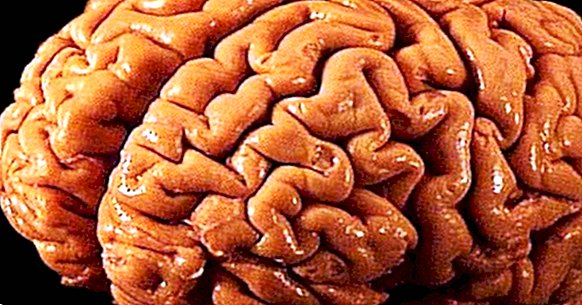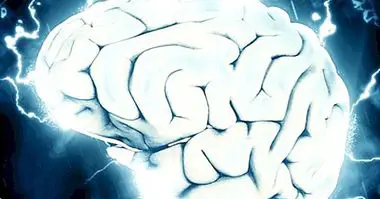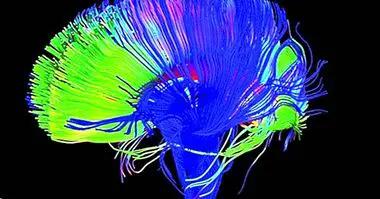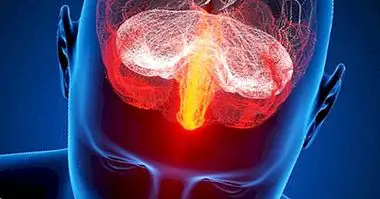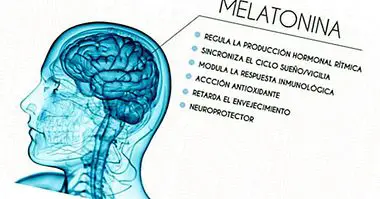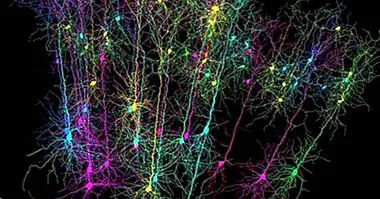Psychotherapy produces changes in the brain
The development and improvement of neuroimaging techniques Throughout the last decades it has allowed to know the structures and functions of the brain in living subjects. Before the appearance of these techniques, the study of the brain was considerably limited in such a way that it was difficult to identify the changes that occurred in it over time.
The appearance of neuroimaging techniques
The neuroimaging has opened new lines of research , such as the identification of abnormalities in the brain functioning of subjects with psychiatric disorders, determination of the brain structures involved during the performance of a specific task (such as remembering a name list) - or a better understanding of the mechanisms brain cells involved in the flight response.
One way to objectively measure the effectiveness of psychological therapy
Psychological therapy produces changes in the emotional state, in the belief system and in the behavior of a patient. Thus, it is not strange that these changes also occur at the brain level . One of the lines of research that has been developed with the arrival of neuroimaging is the study of brain changes that occur as a result of psychological therapy.
Before the arrival of the neuroimaging, the effectiveness of a psychological therapy was measured based on subjective measures such as the assessment made by patient and therapist of the degree of improvement achieved or the comparison of the results of the pre- and post-treatment tests. However the Neural substrate of such improvement was unknown. Hence, the brain was compared to a black box whose content could not be known. The arrival of neuroscience and, specifically, neuroimaging, has made it possible to open this box and begin to know how the most complex organ of the body works.
Changes in the mind produce changes in the brain
If now we can see the functioning and the transformations that take place in the brain, It is possible to objectively measure the changes that occur during the psychological treatment , and also those that may occur after the end of therapy. This advance makes it possible to identify those psychological treatments that are most effective for a particular disorder. The brain, being a plastic organ, is molded as a result of the experiences that the subject has and responds to psychological treatment through changes in its structure and functions.
Barsaglini et al. (2014) conducted a review of the main investigations that have analyzed the effects of psychological therapy in patients with mental disorder. In this review they observed that obsessive-compulsive disorder is characterized by hypermetabolism of different areas of the brain, including caudate nucleus . Many studies suggest that cognitive-behavioral treatments in patients with obsessive-compulsive disorder produce a "normalization" of the metabolic levels of the caudate nucleus and that this "normalization" is accompanied by an improvement in the symptomatology.
On the other hand, patients with specific phobias (such as, for example, spider phobia) experience a reduction in the activity of the limbic system involved in the fear response as a consequence of having participated in a psychological therapy of cognitive-behavioral orientation . In the case of patients with schizophrenia, several studies included in the review by Barsaglini et al. observe that psychological therapy produces a normalization of the pattern of activity in fronto-cortical areas and, therefore, an improvement in symptomatology.
Towards a design of effective psychological treatments based on neurobiological evidence
In general terms, these results indicate that Psychological therapy produces changes in the functioning of the brain and that these changes are associated with an improvement in the patient's symptoms . In this sense, although in different degrees according to the disorder in question, both pharmacological therapy and psychological therapy allow to normalize or compensate the abnormal patterns of brain activity.
Although it is still early to draw consistent conclusions (there are divergences in the scientific literature about what are the specific cerebral changes that psychological therapy produces and also about which methodology is more suitable for measuring such changes), neuroimaging opens the door to a promising line of research: the design of effective psychological treatments based on neurobiological evidence .
Bilbiographic references:
- Barsaglini A, Sartori G, Benetti S, Pettersson-Yeo W and Mechelli A. (2014). The effects of psychotherapy on brain function: A systematic and critical review. Progress in Neurobiology, 1–14.

